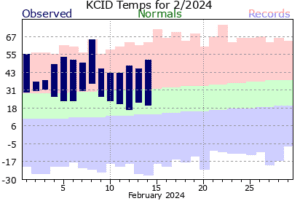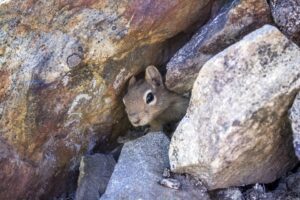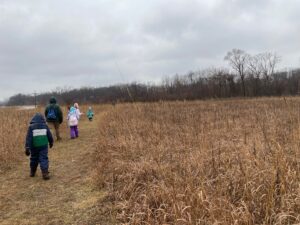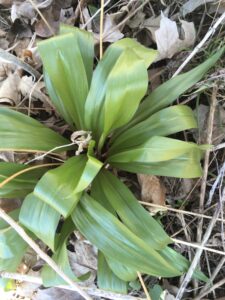Ups and Downs of Early Spring

It’d be fair to say that this winter has been unseasonably warm. Halfway through the month of February Cedar Rapids has already set two high temperature records (February 1 & 8), and every day the temperatures have been “above normal.” Each day in the first two weeks of this February has seen highs above the average February temperature in Cedar Rapids (32.6 degrees). As a result, the snow we enjoyed for sledding, snowshoeing and its beauty has all but disappeared.
The early arrival of spring-like temperatures certainly impacts human activity, but Iowa’s plants and animals also rely on consistent seasonal changes. While the unusual weather patterns can provide challenges (we’ll touch on that later), many plants and animals benefit from a short winter.
Plants Capitalize on Extra Warmth
Trees can sense the temperature of the air around them. This is how they know when to start flowing the sap within that feeds the growth of new leaves. Maple trees begin this process once nighttime temperatures are around 30 degrees and daytime temperatures are around 45 degrees. Indian Creek Nature Center began tapping maple trees on February 14 to prepare for the Maple Syrup Festival. If the warming continues, trees can re-leaf earlier, which provides a longer growing season. This benefits the pollinators and other wildlife that rely on the trees throughout the year.
Wildflowers benefit from an early spring because it extends their growing season. Native species such as purple coneflower, black-eyed Susan and wild bergamot use the additional warm months to increase flower production, which also benefits pollinators.
Grasses, such as switchgrass and big bluestem, can thrive with a longer growing season. Early warming allows faster growth and establishment. This provides critical shelter for small animals drawn out of their winter slumber by warm weather. Also, the additional growth in the grasses’ root systems helps stabilize the soil — combating flooding and erosion.
Animals Thriving in Early Spring

Frogs, salamanders and other amphibians often winter at the bottom of ponds and other water that freezes over during the coldest months. An early thawing draws out the amphibians, who then find breeding partners earlier in the year. This increases their odds for reproductive success.
Rodents, such as chipmunks and ground squirrels, likewise benefit from an extended breeding season. When they emerge early from their winter hiding places, they have more time for foraging and thus get a head start on restoring their stockpiles for the next winter.
Insects also thrive in warm weather and begin breeding and feeding as soon as the weather allows. This has a tremendous ripple effect, since insects are a food source for many other species, such as migratory birds.
With food sources available, birds return to Iowa sooner than usual. Bold species, such as robins and red-winged blackbirds, take advantage of arriving first by claiming their preferred nesting territories. When these migratory birds get the proverbial (and literal) early worm, they are better able to raise their young and survive to see another winter.
The early changing of seasons may benefit some species in some cases, but there are consequences for animals and plants doing their best to survive amidst unpredictable and mismatched weather patterns.
The Dangers of an Early Spring

Changing weather presents many challenges that can disrupt animals’ hibernation or mating patterns, or the life cycles of plants awaiting the perfect time to re-leaf or prepare their seeds. These dangers can impact all animals and plants of an ecosystem.
Misalignment between species can cause disaster. If a plant flowers before pollinators awake, the plants may not get pollinated at the proper time for the plant to thrive. If pests, such as aphids, emerge before their main predators, the imbalance in the food system can have devastating effects on the plants that rely on those predators to keep the pests in check. Such imbalances impact the entire food chain and can leave larger mammals without the food sources they need.
Water supplies can also be precarious during unusually warm winter months when groundwater is still frozen. If there is insufficient rainwater to accompany warming weather, plants and animals that emerge early may find themselves lacking enough water to survive — even if they have plenty of food. Water in the air can also create challenges. Frost becomes a danger to any plant that begins budding or re-leafing too soon. This obviously damages the plants, but it can ruin the food supply for herbivores and inevitably their predators.
How Nature Will Respond
 While the unusual temperatures this February provide a combination of dangers and blessings for nature and it’s too soon to know how our local habitats will respond, there is one thing we can count on. Nature is resilient.
While the unusual temperatures this February provide a combination of dangers and blessings for nature and it’s too soon to know how our local habitats will respond, there is one thing we can count on. Nature is resilient.
Native plants and animals will find a way — as long as we continue to set aside land where ecosystems filled with native flora and fauna can thrive. We can help in small ways, such as mulching the native plants we keep in our yards to protect them from frost, but nature moves in large, complicated patterns — much of which is still beyond human understanding. It is through conservation, preservation and stewardship of native habitats that we can enable species to thrive no matter the challenges they face.
